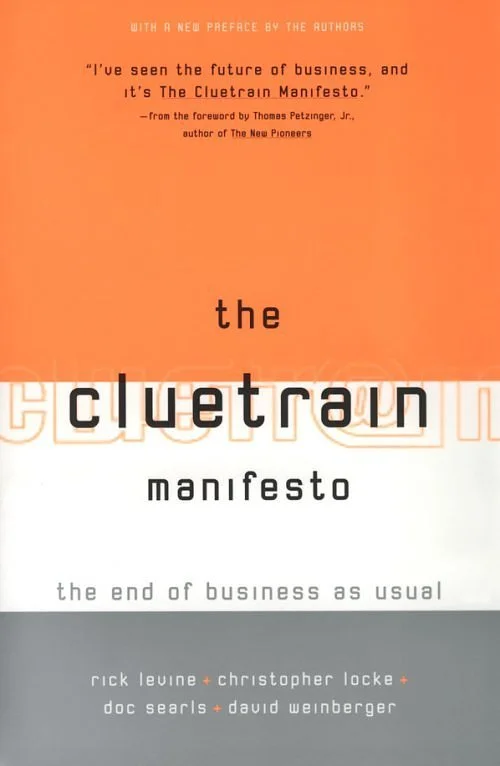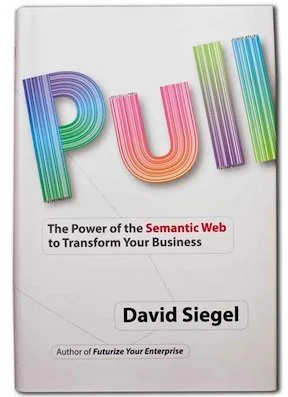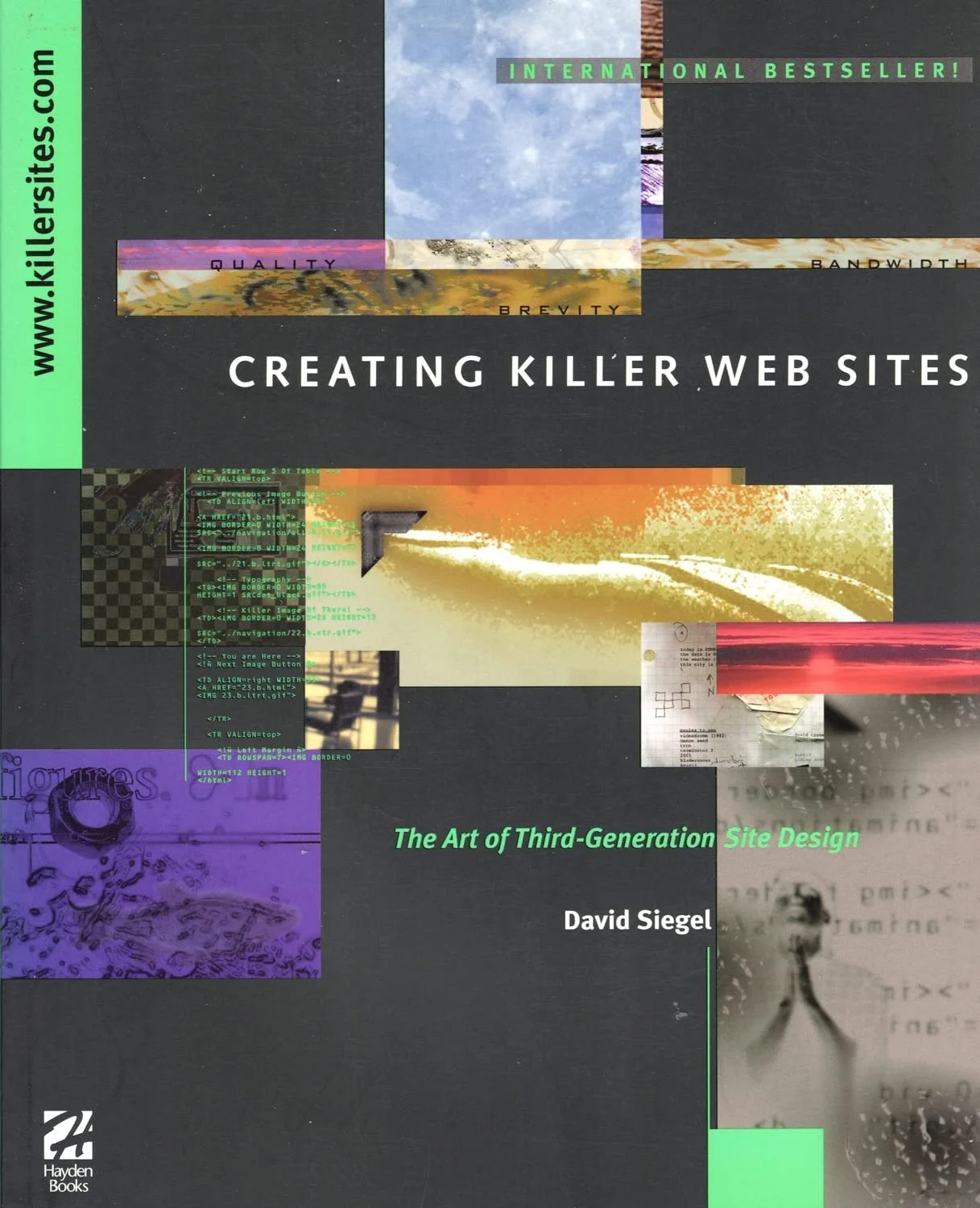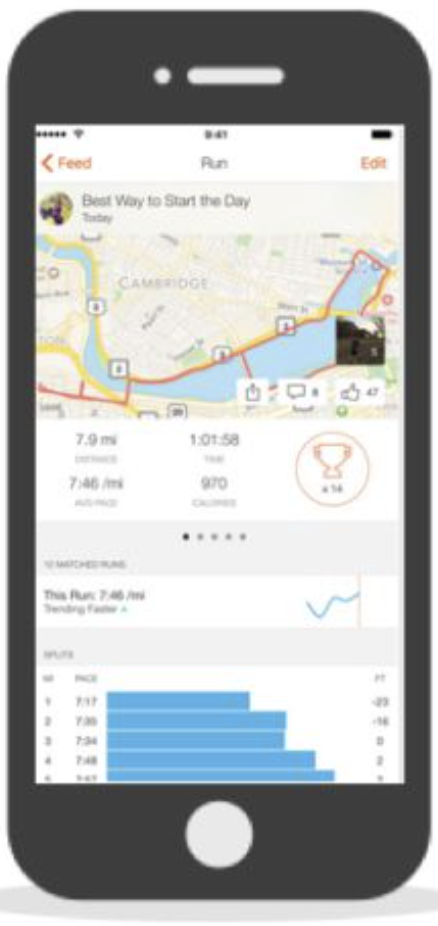We are Redshift Labs. We’re AI experts. We’re redefining how businesses serve their customers. If you’re ready and excited for the 21st century, join us.

Get on the waiting list for our first product!
We’re working on it now. It’s a transformational B2B platform. Click the button below and fill out the form to get on our mailing list. We’re looking for alpha customers to test it out and give feedback. Read the essay first, but if you’re too impatient, you can watch our product demo now.
Markets are conversations
There’s something happening to software that most people haven’t noticed yet, but once you see it, you can’t unsee it. We’re reaching the end of interfaces as we know them.
I don’t mean interfaces are disappearing. I mean the fundamental relationship between humans and software is changing from transactional to conversational, from stateless to stateful, from tools to teammates.
— Greg Isenberg
We are finally coming out of the dull doldrums of humans searching by hand, filtering, reading, skimming, overlooking, running multiple tabs and searches, going too fast, making mistakes, taking wrong turns, shooting and editing videos, filling out forms, and waiting for humans to reply by email.
We’re finally entering the era I described in my book, Pull, from 2010. You can buy it on Amazon today, and I highly recommend the hardcover version for the best reading experience, though I understand many people would prefer the Kindle version.
We’re doing it differently than I envisioned, but the goal is still the same: give customers the ability to pull products and services, focus on the outcome, and streamline the intermediary processes. Markets are conversations, not linear processes. The goals keep changing as society moves forward. Let’s dig in.
Websites are dinosaurs
In 1994, I invented websites. Before that, there were pages and links. I wrote the first book on web design, which remains to this day Amazon’s longest-running #1 bestseller and was translated into 17 languages. Today, there are around 1 billion websites, and they are all past their prime. Websites are expensive to maintain, difficult to navigate, usually out of date, and the source of many arguments inside of companies. Intranets are just as bad — it’s difficult to find anything, and people are rarely incentivized to share information maximally.
Today, many companies are doing a tremendous amount of repetitive work by hand. We are used to it. We accept it as part of our jobs. But AI can do all that, and we should keep remembering to use AI first, rather than do it ourselves.
There are degrees of repetitive work. Today, we use databases and mail-merge to send out thousands of customized emails, but we still cut and paste details from one document to another and spend a lot of time getting the details right.
Websites are a great example. Today, we use SquareSpace, WordPress, or Wix to build a website. The advantage is that the system can present a dynamic site to whoever is visiting, whether on a desktop, a tablet, or a phone. You’re reading a SquareSpace site right now. What a pain these platforms are! There are always compromises, workarounds, and “custom code” to get what you want. Ecosystems of consultants surround these platforms because they are so arcane and temperamental. They are barely a step up from hand-coding HTML.
As I was creating this page, I made some mistake and put all the sections into the footer rather than the body of the page. Half an hour later, I realized the problem and spent another half an hour cutting and pasting the sections out of the footer into the header by hand. How 2015 is that?
Apps are traps
I’ve been saying this for 25 years, even before mobile apps were a thing. Apps are not ecosystems, they are silos. Every company would love to have a lot of customers using its app, because it’s so hard to switch apps, establish an account, do KYC, and get set up properly. Once you do all that, it’s a barrier to switching vendors.
But.
Apps are expensive to maintain. If you have a website and a mobile app, you now have three platforms to keep up-to-date, not to mention social media, blogs, and other content. The more channels you have, the more IT people you need. Apps are notorious for using up a lot of engineering and maintenance. There are frequent OS updates, which require frequent responses on both IOS and Android. So the tech team grows and grows.
Plus, most customers don’t want an app for every vendor. They would rather have flexibility. They would rather have a personal data locker, but that doesn’t look like it’s going to happen. Think of it in a hierarchy:
Website
Tab open all the time
App
It takes a lot to get a consumer to download and commit to an app. They may do it for their bank, but they are unlikely to do it for your mattress company or your coaching service.
If you want to do it all using a website, you’re again stuck with Wix, SquareSpace, and WordPress. This is the world of 2020, not the world of 2030.
Now everyone is vibecoding apps, but apps are not the right solution for most problems. What can we do instead of apps?
Services.
If companies provide services, then users/consumers can mash them up and get exactly what they want. Apps are too limiting. Think of all the communication/social apps that have all their own infrastructure, and you have to recreate your social graph on each one over and over again. Think of all the forms you have to fill out over and over.
A digital service economy scales without all the overhead and marketing of apps. Whether you provide legal advice, heart surgery, autobody work, or package shipping, you want your services to fit into the customer’s ecosystem, rather than the other way around. Once we get out of apps the economy will really start to accelerate.
The Company Software Stack
The rest of today’s tools are similar. Regardless of what business you’re in, your company’s software stack looks something like this:
Word and/or Google docs
Excel and/or Google sheets
Intranet (Sharepoint, Workvivo, Simpplr, Staffbase, etc.)
Communication (Slack, Zoom, Meet, Teams)
ERP software (Oracle, SAP, Microsoft, Sage, etc.)
Accounting (Xero, Quickbooks, Freshbooks, etc.)
CRM (Hubspot, SalesForce, Zoho, Pipedrive, etc.)
Customer support (Zendesk, Helpscout, Intercom, etc.)
Email (Hubspot, Mailchimp, Constant Contact, Brevo, etc.)
Web publishing (Wix, WordPress, SquareSpace, etc.)
Contracts (Word, DocuSign, legalese, contract databases, etc.)
All these systems are now desperately adding AI to their existing work models. Think about that. Not only do companies have a lot of vendors and interoperability issues, but now every system is going to be “smart” and try to impress customers with what it can do — in its own silo. How’s that going to work out?
Will companies now need fewer IT people or more?
How many clicks does it take to do something on your app or website?
How about no clicks?
In 2025, we are still mimicking the old paper/folder/filing-cabinet way of working, we’re just automating it. We’re still sending electronic invoices that look exactly like the old paper invoices to a group of people called “accounts payable” and getting an “electronic check” in return. We’re actually signing documents using fake signature fonts to make our documents look like they have been signed by a human on paper. Even today, many medical orders are still sent by fax!
AI is now being used to assist salespeople in making the pitch, to assist students in doing the homework, to assist writers in writing the copy, to assist lawyers in managing the documents, to assist the accountants to make sure the accounting is done correctly, to assist the designer in using the software, to assist the architect in designing the building, and to assist the security team in looking for vulnerabilities.
This is not going to be the case for very long. In most cases, we don’t need to pitch, do homework, write copy, manage documents, etc. We want the end result, not an AI-assisted process. We need to think differently and let the customers pull products and services through our companies directly. That’s why I wrote my book. And now it is (finally) time to rethink business and get the end result rather than “digitize” and “automate” the old processes and pipelines.
Imagine an architect designing a home. The experience with AI is going to be more like conducting a symphony than using the tools directly. Speak in metaphors and make grand gestures. Talk about sunsets, colors, seasons, and the feeling of the sunlight coming into your bedroom in the morning. Reference other similar homes around the world. Let AI generate all kinds of options and choose the options you like, then keep trying and iterating and refining, sometimes trying something entirely new, most of the time narrowing down to, say, three finalists. Refine those three finalists using finger gestures, conversation, choosing from palettes, exploring options, turning, twisting, opening, closing, and refining.
Then present those three to the client. When you have your overall design and footprint, start detailing, engaging all systems: engineering, lighting, plumbing, entry/exit, security, temperature control, code compliance, all while watching the price estimate change in real-time, and the house or building begins to really take shape. No drawing. No floor plans. No tools. In this example, a house is the result of a conversation between the designer, the client, the AI system, and the contractors that build it. In effect, the client pulls the house through the system in real time during design and very quickly during the build phase.
AI is not a tool. It’s not a helper. It’s an employee. It’s an analyst, designer, salesperson, demographer, actuarial, marketing partner, HR person, project manager, event planner, even product manager. It doesn’t replace software, it replaces humans. It doesn’t manage humans, but it can function as an employee for many companies. It may not get everything right, but neither do humans. One thing it will do is work hard and do the task over and over until you’re satisfied.
One of my favorite prompts is “You’re an analyst. Be one.”
Push to talk
Soon, you'll just talk to your car and it will drive you. You'll talk to your oven, you'll talk to your video-editing and image-editing software, elevators, robots, your house, and much more. The conversational interface will become more and more common.
Voice agents will be everywhere. They will recognize you and remember what you did last time. You may not want to wear AI glasses or an AI pin or an AI necklace. You may just want earbuds that can talk to you the way J.A.R.V.I.S. does. I believe the J.A.R.V.I.S. interface will be how most people interact with the digital world when they are out away from the office. I’ve made a video on that.
The race is on. To make things easier. There’s a learning curve. Things that are expensive today will be cheap a year from now. Privacy issues are going to be very important, the same as they are today with your laptop and phone. Soon, push to talk will be the default for many interactions, including with all the companies you deal with.
At Redshift Labs, we're creating the conversational interface to companies. We’re building it now — want to join us?
Markets of one
We’ve been talking about this forever, and what we have now is “birds of a feather” — groups of customers who are similar. That’s because it’s too hard to treat everyone individually.
But AI can do that. AI can take as long as anyone needs to give that customer what she wants. The vast majority of your potential customers aren’t ready to buy yet. They need more information, they need more proof, they need more assurance, they need more time. Companies typically spend their effort on clients who are “ready to buy,” because that’s the best allocation of resources. But now companies can take each customer on her own personalized journey and give her all the attention she needs. For pennies.
Economic growth
Today, any country that grows its nominal GDP by 5 percent per year is growing quickly. Very few nations can do that. The big exception over the last 30 years has been China, but even they have slowed down. Most developing nations are working hard to catch up, but they are held back by lack of infrastructure, education, access to markets, governance, and much more.
Some experts say AI will give everyone a smart assistant to help them do their jobs. I don’t see it that way. I believe much more in the acceleration of economies.
If you have an assistant to help you write a book, then the AI does a lot of the research and much of the writing, and then you, the author, go over it and make sure it’s the book you want. You do the final edit, work with the AI to get all the quotes and charts you want, and then you send the book off to the printer. You’d do the same thing with a report or a business plan.
For the last 40 years, the US has experienced nominal GDP growth of around 5 percent per year.
But with AI you don’t need to write a book. You ask the question: “Is a book the right solution to my customer’s problem?” You ask: “What’s the end result my customer really wants?” Suppose your customer wants to learn behavioral economics. You can create an experience rather than a book. An interactive experience might be a course, blog posts, debates, conversations among experts, interviews, and a back-and-forth conversation with the author directly. A book is a one-size-fits-all solution that bores most of its readers, no matter how well written it is, because much of the time spent with a book is not time spent getting what you really want.
It’s better to think of the results people want before you give them a solution. They may want to build an airplane or buy a home or learn about Winston Churchill or study calculus or plan a safari. In that context, a book is hardly the right tool for the job. Even if you think of the great books that get used all the time as textbooks and “landmark” works, what if you had the author right there with you teaching you everything she knew and helping you get your result? The gorgeous writing, the layout, the illustrations — they mean nothing if you’re having a conversation with someone who can help you build an airplane, design an experiment, start a business, design a chair, diagnose your symptoms, or get you a job.
People often hire consultants or see doctors to get a certain outcome, but that process is dependent on finding the right person and getting the right advice. Different people will give different advice for the same problem or symptoms. Then, the customer or patient has to decide what’s right for her. What if she had the ability to get dozens of opinions, distill primary research and metastudies, try small experiments and see what happens, and take responsibility for her own outcomes? In the age of AI, you won’t trust a single doctor or consultant, you’ll want access to a range of opinions and suggestions, and you’ll get help with the process of making decisions using the appropriate decision framework. We will trust individuals less and trust AI more. AI will be biased rather than Neutral, but it will be biased less than most humans are.
(I’m looking forward to a company called Feynman that makes an unbiased, evidence-based, maximally truth-seeking LLM, but that company doesn’t exist yet.)
We need to think more about the end goals rather than the means. Our software is designed to fill the middle of that process, to help humans go through the steps from A to Z.
You can buy a bunch of books and use them to build a new software business. You’ll need books on creating your app, managing people, setting up marketing, getting initial customers, building your back office, hiring, pricing, distribution, etc. Or you can hire consultants and advisors. It’s a lot of knowledge, and it takes years to get it working correctly.
Or you can just conjure up a new software business using AI, ask AI to help you go to market, get first customers, and serve them. You can use your time talking with customers about what outcomes they really want and how the software can better meet their needs. In this scenario, everything is a conversation, and the business is a byproduct of those conversations.
Conjuring, not assisting
Stop using AI assistants and start waving your magic ward and conjuring. Conjure up a new kind of school. Conjure up a new way for people to file their taxes simply by having a converation and answering questions. Conjure up an event. Conjure a health and fitness plan that works for you. Conjure up an airplane that builds itself in the factory and flies itself to your hangar. Wave your magic wand and create things. Think of the end result, not the intermediate result.
Today, I conjured up a legal contract using two separate LLMS — one to draft the contract and the other to critique and make suggestions. I asked questions and kept the conversation going. After several back-and-forth passes, they both agree the contract was in plain english, clear, and legally valid. I didn’t write a word. This is what AI should do — it should do all the heavy lifting, under your guidance. It should not be a tool to help you create, it should be a machine that creates, and you design the machine.
I think if we do it right, within a few years, developed economies could easily see nominal GDP growth of 1 percent per month.
What about undeveloped economies? They will have access to world-class education and resources for pennies. They will be able to do much more with much less. We in the developed world will want their products and services. We will conjure up experiences they will be part of. There will be a lot of change, and not all of it will be beneficial, but I think for the next 30 years or so we’re going to see acceleration everywhere that will lift all boats.
That’s why we’re called Redshift labs. Because we see the benefit in accelerating the world economy. Jensen Huang says you don’t have to fire your best employees, you can just have new ideas to redeploy people to new challenges. With just a little training, they’ll be able to take on those challenges and serve customers in new and delightful ways.
Silicon Valley Girl made a video on how she automated most of her marketing and is now hiring more humans to grow her company faster.
The agentic economy
We are heading toward the agentic economy, where the customer’s bots will search for what I want, find it, and negotiate with the seller’s bots, make the purchase, settle the transaction, and not just deliver the goods but also deliver the metadata. So you just say what you wish for and what your parameters are, and the agents do all the work. You conjure up your next pair of skis or house or trip to Paris.
The agentic economy is just beginning. It has four parts:
Search bots will go find what we are looking for. Many Google searches have recently been replaced by AI searches. They try to compare apples to apples and manage to do so most of the time, but they are largely guessing.
Purchase bots will negotiate on behalf of the buyer.
Now, companies are using AIO to get seen by the search bots. AIO is another form of gaming the system, where companies use AI and humans to write (possibly fake) reviews and make noise about their products and services in the forums most favored by AI training and search.
Sales bots will flag down the search bots, make offers, and negotiate a deal. In the old world, sellers used SEO to game the system into getting traffic. Today, a good sales bot interacts mostly with humans and drives toward the sale. Ideally, it’s the company’s best, most prolific sales person. It needs to have all the capabilities a human would have if a human could be sitting on the website showing products or describing services and having conversations with human site visitors. You can see our product demo for this as it was in mid-September 2025.
In the agentic economy:
Your website means nothing
Your ads, images, videos, funnels and landing pages mean nothing
Your copy, messaging, and branding are irrelevant
Your SEO and testimonials mean nothing
Your newsletter and text messages mean nothing
What matters is:
Your offer
Your offer’s findability
Your offer’s availability
Getting your offer discovered
Your semantic reputation
Your validated reviews
David wrote in his book that this will lead to a performance economy, where the claims and the performance of products will be much more closely aligned than they are today. Today, companies with the best marketing win. In the performance economy, companies with the best products, services, and offers will win much more.
We’re going to need a few more pieces of infrastructure to make this happen. One is “The world of offers,” which David described in his book and had the brief opportunity to build in 2018. But he hired the wrong team and wasn’t able to get it done. Now he’s ready to try again. He has a white paper on this concept for any investors or technologists who want to read it.
This is the era of AI. This is the era of growth. We’re in a rocky but brief transition to the machine economy.
Join us
In 2017, David started an online community with a single web page that became the Pillar Project. The Pillar wallet is still in the app store and still has a community of crypto enthusiasts behind it.
In 2023, Alon started RAGMetrics to help people set up KPIs and evaluate the effectiveness of their LLM-based systems.
Now we’re starting an AI community to help others learn about AI and come up with new product and company ideas. We’re looking for people who are already into AI, see the possibilities, and realize that we’re at the starting line right now. It’s time to build solutions on top of LLMs and agents that delight customers and give them the end result without all the middlemen.
We’re looking for designers who want to conjure up new interfaces, new workflows, new ways of connecting buyers and sellers, new ways of getting the end result.
We’re looking for technologists and builders who want to conjure up the web apps that guide the LLMs to create solid solutions to move our customers forward.
We’re looking for product people who can translate the needs of a customer into a conjured-up solution. We don’t want to redesign TV remotes — we want to eliminate them. We don’t want to redesign education — we want to replace it with something better. We don’t want to build banks or insurance companies or tech support or doctors — we want to give customers the end result, not the clumsy “solutions” we have today.
We’re looking for investors to invest in projects and funds. If you’re an accredited or non-US investor, join us on the journey and learn alongside us.
We have a Slack community. We’re going to have Zoom calls, events, and put founders and technical people together. We hope to get companies funded. If you want to join, fill out the form below.












